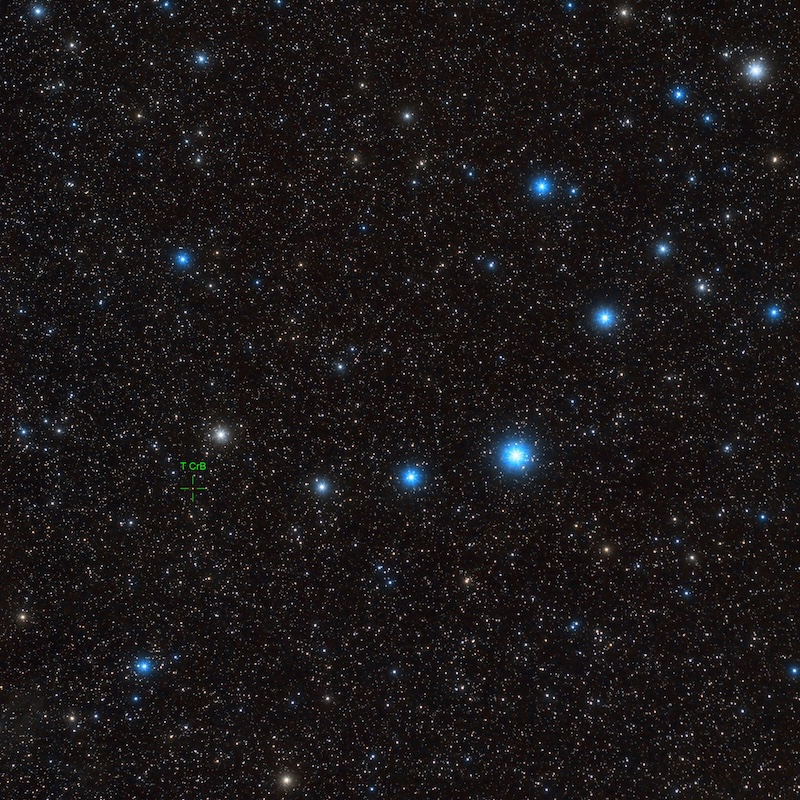
Watch for a ‘new star’ in the Northern Crown
T Coronae Borealis, or T CrB (pronounced “T Cor Bor” by most people), is located 3,000 light-years away from Earth. It is a recurring nova with outbursts about every 80 years. Its last outburst was in 1946, and astronomers believe another will occur between February and September 2024.
The star system, normally of magnitude +10, is far too dim to see with the unaided eye. But when the nova erupts, the star’s brightness will jump to around magnitude +2. That’s roughly the same brightness as the North Star, Polaris, which is easy to spot.
So use the information below to learn to find the Northern Crown and watch it in the coming months. You might see the nova, or “new star,” pop into view. Once its brightness peaks, T CrB should be visible to the unaided eye for several days and just over a week with binoculars before it dims again, possibly for another 80 years.
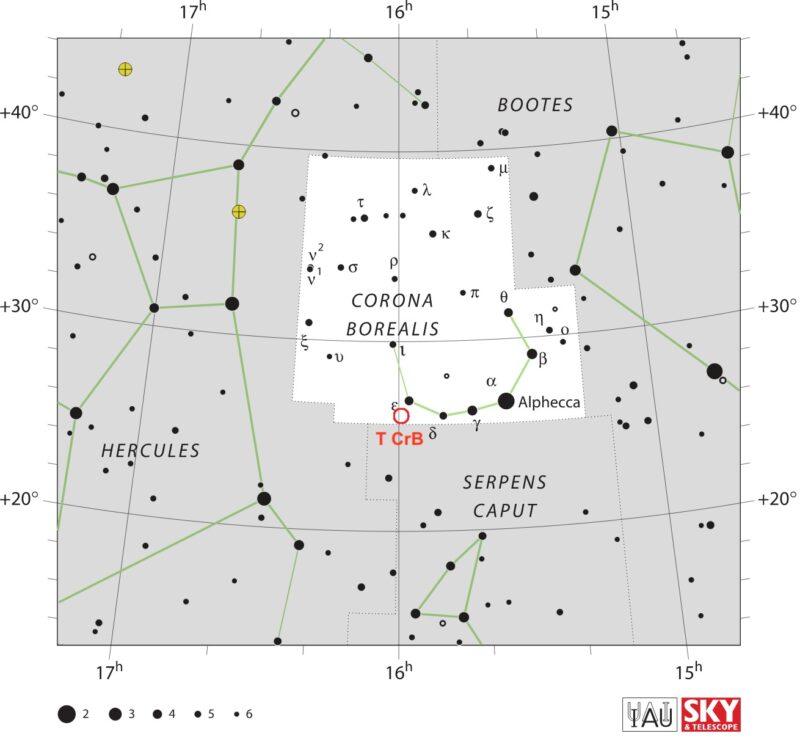
What makes the nova erupt?
T CrB is a double star system. It consists of a large cool star and a smaller hot star, orbiting each other every 228 days. The cool star is a swollen red giant that continually transfers material to the hot component. The hot component is a white dwarf, surrounded by an accretion disk made of material transferred over from the other star.
All of this is hidden inside a dense cloud of material from the red giant. When the system is quiescent, the red giant dominates the visible light output and the system appears as an M3 giant. The hot component contributes some emission and dominates the ultraviolet output. During outbursts, the transfer of material to the hot component increases greatly, the hot component expands, and the luminosity of the system increases.
The Northern Crown graces the summer skies
If your sky is dark enough, Corona Borealis – aka the Northern Crown – is exciting to find. In fact, it’s easy to pick out as an almost-perfect semicircle of stars. You’ll find this beautiful star pattern in the evening sky from now until October.
The constellation Corona Borealis is also located more or less along a line between two bright stars. The first is Arcturus in the constellation Boötes the Herdsman and the second is Vega in the constellation Lyra the Harp.
However, you’ll need a fairly dark sky to clearly see Corona Borealis between Vega and Arcturus. Then, once you find the semicircle of stars, it’s very noticeable.
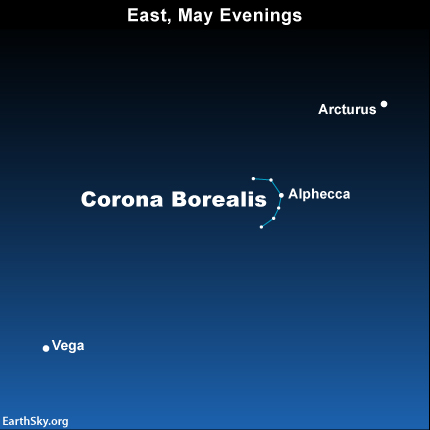
The brightest star of the Northern Crown
The brightest star in Corona Borealis is Alphecca, also known as Gemma, sometimes called the Pearl of the Crown. The name Alphecca originated with a description of Corona Borealis as the “broken one.” This was in reference to the fact that these stars appear in a semicircle, rather than a full circle. Alphecca is a blue-white star, with an intrinsic luminosity some 60 times that of our sun. It’s located about 75 light-years from Earth.
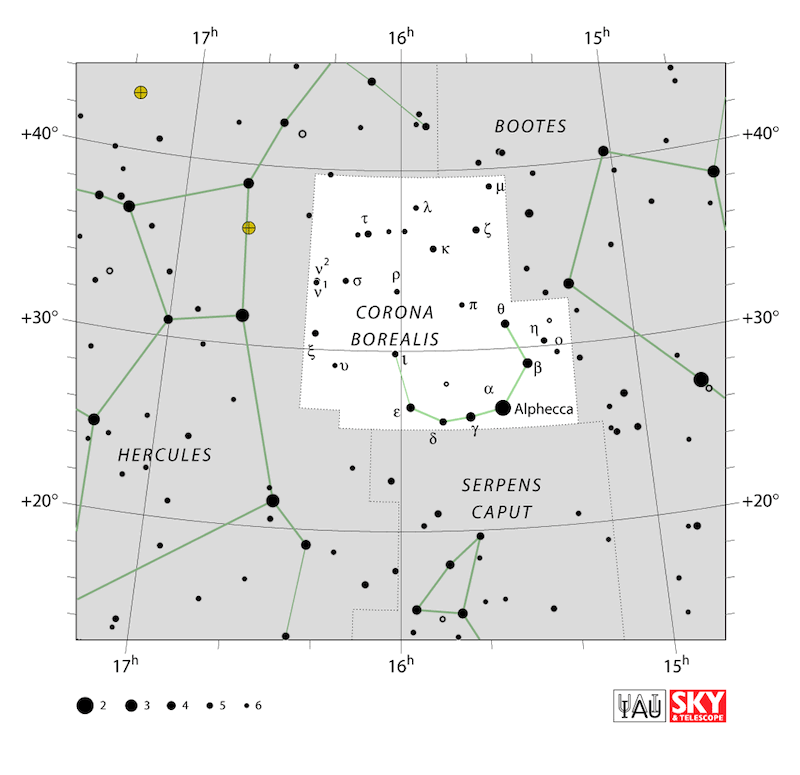
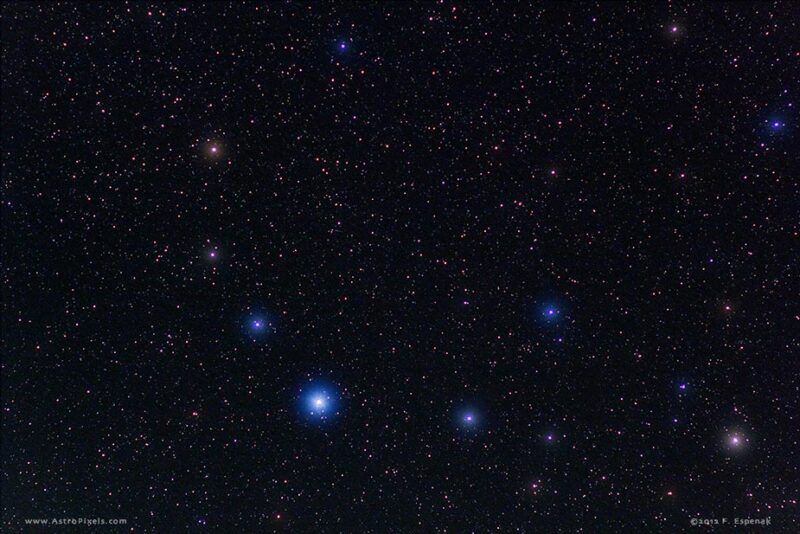
Bottom line: Corona Borealis, the Northern Crown, is an almost-perfect semicircle of stars. In the northern summer of 2024, it might be home to a nova, or “new” star.
Read more: A ‘new star’ from a nova outburst is expected soon
EarthSky astronomy kits are perfect for beginners. Order today from the EarthSky store











